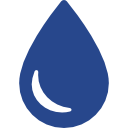Frequently Asked Questions

QUESTIONS ABOUT FIRE RESTORATION
There’s soot all over my house – What do I do?
A fire will send soot and particulates throughout the entire house, especially if the air conditioner is running. After personal belongings are removed from the house, we will clean every surface, even the walls.
My clothes are covered with soot and smell like smoke – How can I get them clean?
Damage by smoke is a unique problem and has to be handled by a professional cleaner who specializes in smoke damage. Using a washing machine/dryer or sending clothes to a regular dry cleaner can permanently set smoke odors or can cause soot to be set into the fabric. Advantage Restoration & Contracting uses specialists for the clothes cleaning process and will get your clothing back to you quickly.

QUESTIONS ABOUT WATER DAMAGE
I have a water leak – Now what?
First stop the leak source. Turn off your water meter and if necessary call a plumber. Keep the water in a confined area using sheets, blankets, and towels. Remove as many items as possible from the water to avoid further damage. If possible, start drying the area with towels, mops and a wet shop vac plugged into a GCFI outlet only. Do NOT to use your regular vacuum cleaner.
How will I know if something is still wet?
Only a moisture meter can determine if a surface or structure is still wet. Your floor, carpet or wall might feel dry to the touch, but our skin cannot adequately detect moisture. Different building materials will hold different levels of moisture. Our technicians will bring equipment specifically designed for moisture detection and will help you determine if treatment is needed.
How long will it take to dry my structure?
We will use a moisture meter and a humidity meter to take readings every day during a dry-out. Almost any affected area can be dried within three days. However, only when humidity and moisture readings are back to normal levels can we legally declare a structure dried.
Will an infrared or thermal camera show what is wet?
Technically, infrared and thermal cameras show temperature variations. They are very effective tools to show us where moisture may be present or to help us pinpoint potential problem areas. However, to accurately determine a moisture level we will use a moisture meter.
What is involved in a typically drying process?
We use specially designed fans (blowers/air movers) to hyper-circulate the air to aid in the drying process. In addition, we have high-quality dehumidifiers to extract excess moisture from the air.

QUESTIONS ABOUT MOLD
How can I be sure I have a mold problem?
Typically, we are called because mold has been found. However, if there has been water damage there can be mold hidden behind walls and inside other structures that can hold moisture. In cases where mold is suspected, an inspector who is certified in mold detection can check your property. In addition, samples might be taken and sent to an independent laboratory for analysis.
What affects can mold have on my health?
Mold reproduces by sending spores into the atmosphere. These spores are harmful because they are inhaled. Every person will have different sensitivities to mold, but without proper testing it is almost impossible to know if the there are types of mold that are labeled as “toxic.” For some people, mold exposure will cause cold or allergy-like symptoms such as a stuffy nose, eye irritation, wheezing, or skin irritation. Other people, such as those with serious allergies to molds, can have more severe reactions. Severe reactions can include fever and shortness of breath. People with chronic lung illnesses and those with compromised immune systems may develop mold infections in their lungs or die from mold exposure. The Institute of Medicine (IOM) concluded in 2004 that there was significant evidence showing that exposure to indoor mold is linked to upper respiratory tract infections, coughing, and wheezing in otherwise healthy people; with severe asthma reactions in people with asthma; and with hypersensitivity pneumonitis in individuals susceptible to that specific condition. The IOM has also found evidence linking indoor mold exposure with respiratory illnesses in children who were otherwise healthy.
Why can’t I clean mold using bleach?
There is ample evidence showing that even brief exposure to mold can have detrimental health effects. Our technicians will securely block-off the affected area of your property to keep mold from spreading to the rest of your structure. In some cases, wallboard or other affected structures can be removed and destroyed while other items can be cleaned. We can determine which items need to be removed and replaced and which can be cleaned to be returned to the home or business once the mold is removed. Bleach is not a good solution for mold remediation for a variety of reasons, but the most important reason is that bleach has no ability to inhibit mold growth. We use cleaning products that are specially formulated to combat and kill mold and will inhibit mold re-growth.

